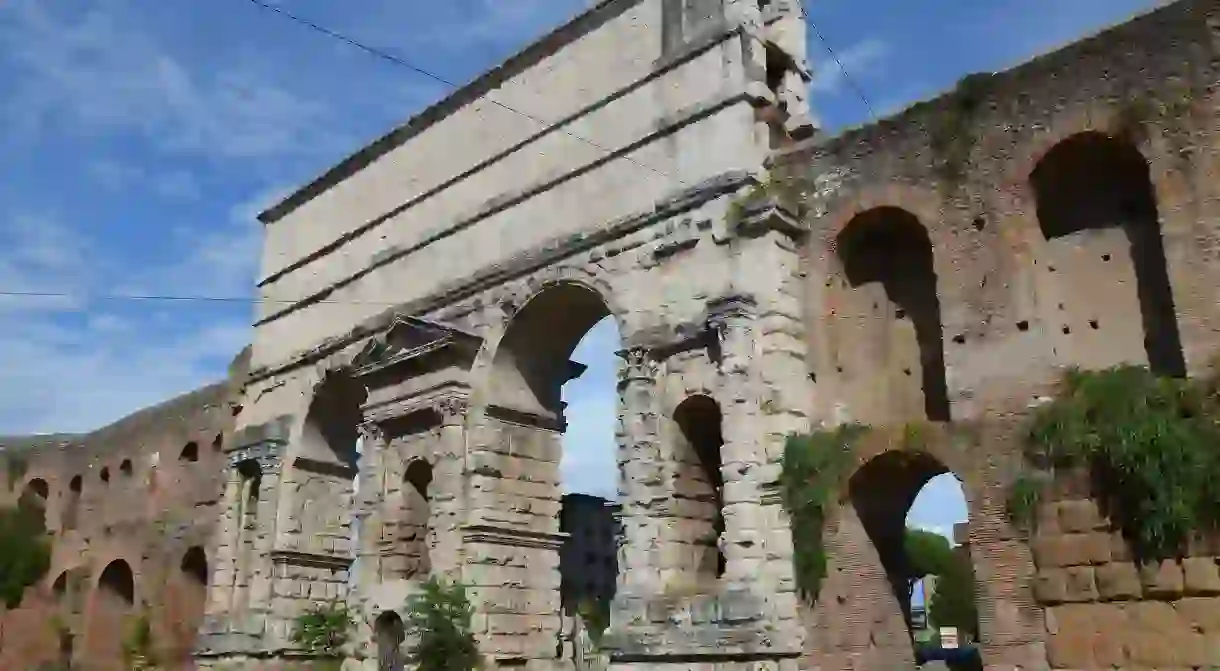A Brief History of Rome's City Walls

Today, Rome‘s imposing city walls are often overlooked by visitors who are drawn to more recognizable tourist attractions. However, the story of the Eternal City’s defenses and boundaries reflects the fluctuating influence of the Roman Empire. Here is a brief history of Rome’s largest ancient monument.
The origins of the city walls can be traced all the way back to the 4th century BC, when the 6th king of Rome, Servius Tullius constructed the first defenses. The Servian walls were built from large blocks of volcanic tufa and were documented as being up to 10 meters high. A small part of these first boundaries can still be viewed near Termini station where a section of the wall remains to this day.

During the Republican times, as Rome’s strength and power increased, the walls were all but abandoned, and the Golden Age of emperors during the 1st and 2nd centuries AD saw peace spread throughout the empire, with barbarians posing no significant threat. For over 500 years the influence and extent of the Roman Empire rendered defenses unnecessary.
However, the continuing expansion and subsequent weakening of the Roman Empire saw the beginning of invasions throughout the lands and, in 270 AD, this vulnerability – paired with the need to redefine the ever-expanding boundaries of the city – prompted emperor Aurelian to rebuild the walls. The mura aureliane were far larger and stronger than the wall of Servius Tullius and enclosed all of the seven hills of Rome, as well as the Trastevere district south of the Tiber River. As the Roman army started to dwindle after long and tiring military campaigns, Aurelian decided – rather than use his much-needed soldiers to build the fortifications – he would take the unorthodox decision and utilize the citizens of Rome to build the walls.
The walls – which were 18 kilometers long, 3.5 meters thick and enclosed an area of 3500 acres – were built in just five years and were finished after the death of Aurelian. Incorporating pre-existing structures, such as the Pyramid of Cestius and the Claudian Aqueduct, cut down on labor and resources and hastened the completion of the project, with around one-sixth of the construction being composed of other buildings and monuments. The original structure was between 6-8 meters high, but later modifications by Maxentius doubled the height as the need for extra protection increased. There were also 381 square watchtowers located at 30-meter intervals and 18 gateways in and out of the city.

The walls survived the fall of the empire in Rome and remained the primary defense of the city for 16 centuries, until they were breached at Porta Pia on September 20, 1870, marking the beginning of the unification of Italy under King Victor Emmanuel II.
Nowadays, the Aurelian Walls are the largest ancient monument in Rome and can be traced throughout the city. The grandiose gateways can also still be seen at Porta Maggiore and Porta Pinciana, with the towers at Porta San Sebastiano now housing the Museo delle Mura – a museum documenting the history of the walls, which also allows visitors to walk along one of the best-preserved segments. Elsewhere, parts of the wall have been seamlessly absorbed into the modern city and some sections have even adapted into homes and apartments. The mura aureliane are still also used as a demarcation of the historic center, even though the suburbs of the city have long since sprawled beyond the ancient walls.














